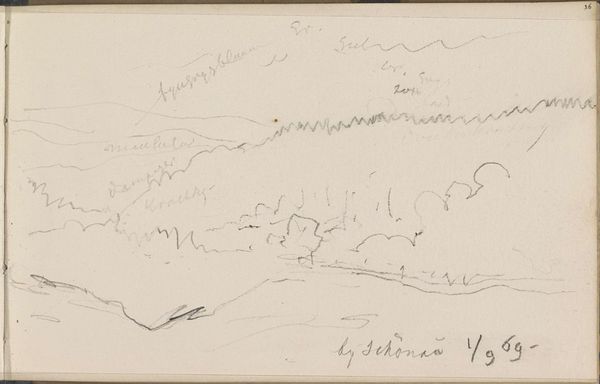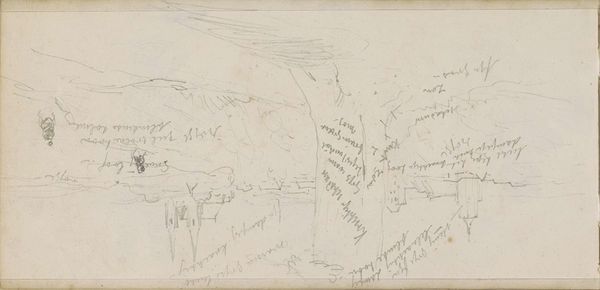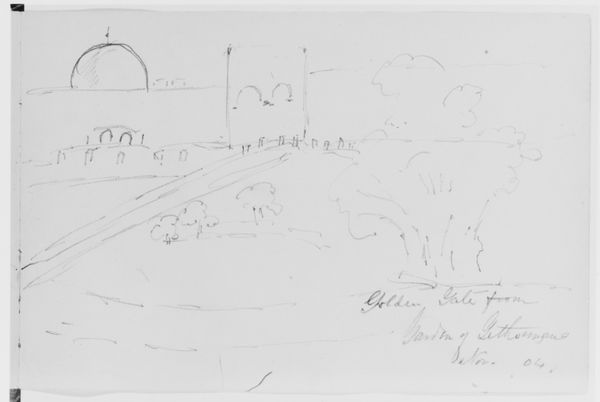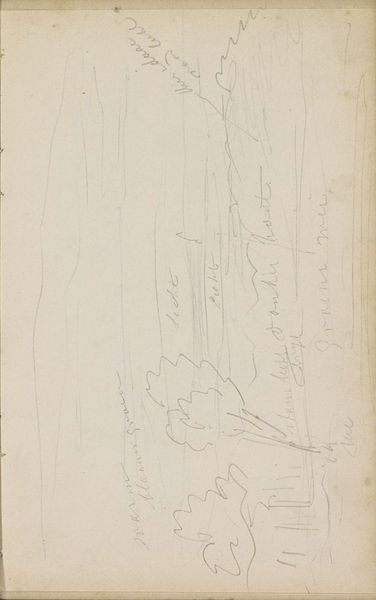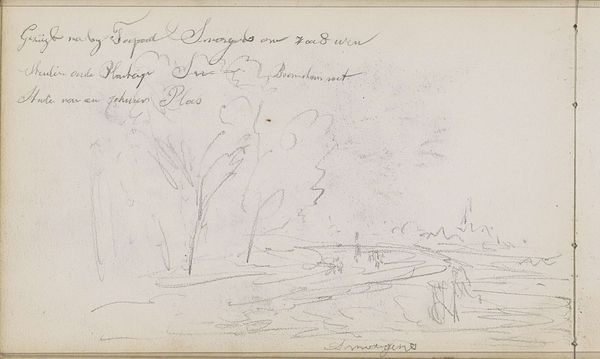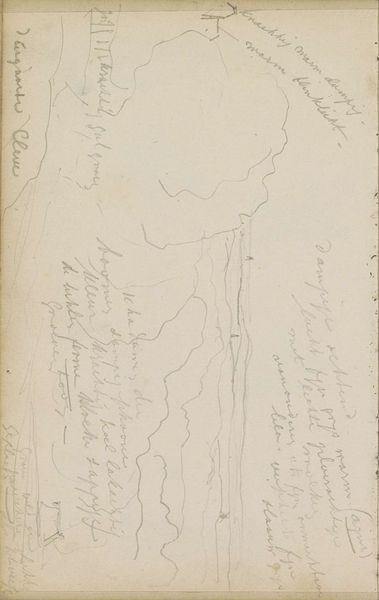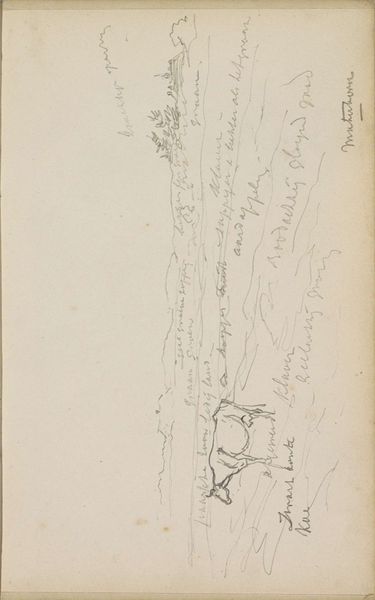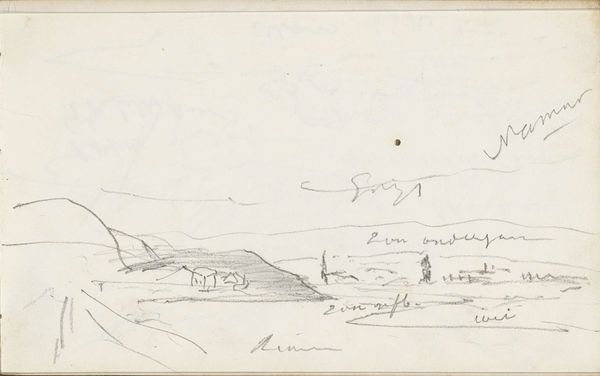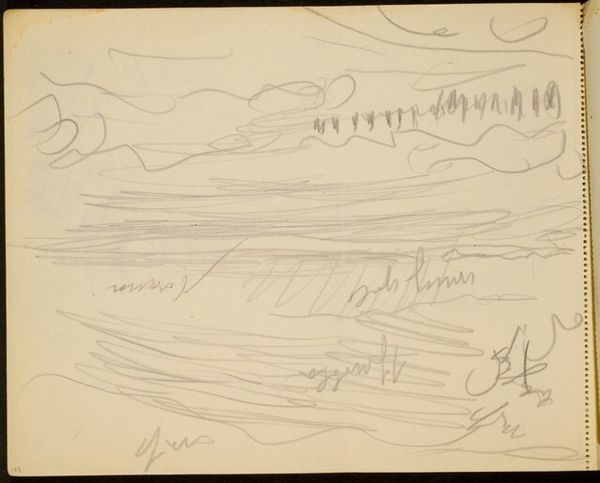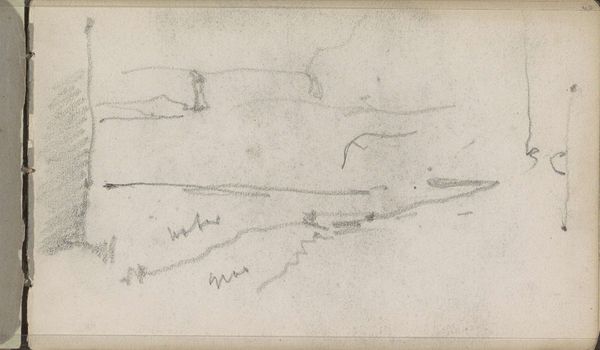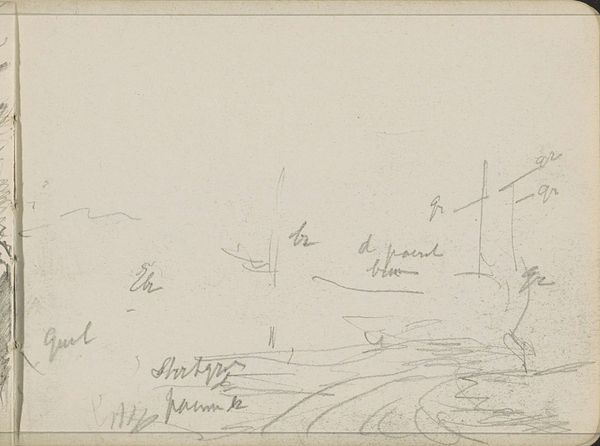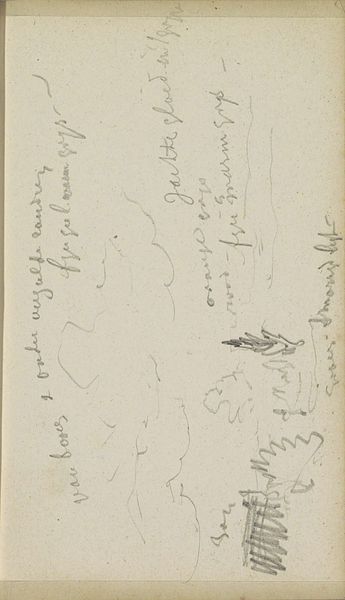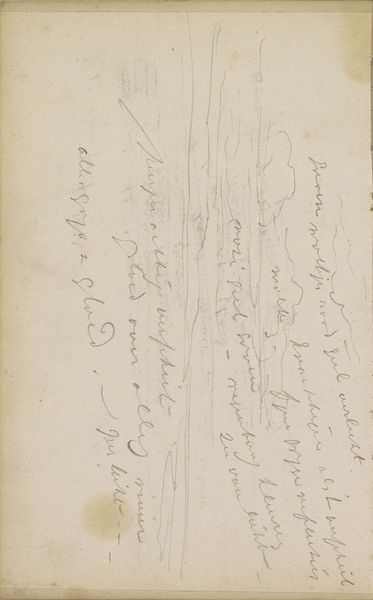
drawing, plein-air, pencil
#
drawing
#
quirky sketch
#
impressionism
#
plein-air
#
hand drawn type
#
landscape
#
personal sketchbook
#
idea generation sketch
#
sketchwork
#
ink drawing experimentation
#
pen-ink sketch
#
pencil
#
sketchbook drawing
#
storyboard and sketchbook work
#
sketchbook art
Copyright: Rijks Museum: Open Domain
Curator: Today we're looking at "Polderlandschap met molens," a drawing by George Clausen from 1874. It’s a pencil and ink work, seemingly created *en plein air*, right there in the landscape. Editor: My first impression is how ethereal this sketch feels, almost dreamlike. The windmills and landscape emerge faintly from the page. Curator: Indeed. As a materialist, what strikes me most is that this drawing clearly comes from a personal sketchbook. It gives us direct access to the artist’s working process. The immediacy of the line work, combined with handwritten color notations, really collapses the distance between viewer and creator. It shows how sketches can function as experiments, as annotations, or as records of the artist’s observation. It almost anticipates future landscape paintings, or perhaps illustrates a poem, or even functions as a study for something. Editor: For me, it's the recurring windmill motif that holds my attention. They punctuate the horizon line like symbols, suggesting a deep connection to the landscape. Windmills often symbolize industry, yes, but here, rendered so faintly, they become something more ambiguous. They’re almost totemic, embodying the spirit of the place and maybe even hinting at human impact on the environment. Curator: I see what you mean. The way the windmills become embedded in this landscape hints at the economic forces shaping and changing land. The work almost reads like a reflection on rural life—and, if one chooses to be critical of it, perhaps even the start of industrialization's integration in nature and landscape. I find it interesting how an idea such as that can be delivered through such faint execution. Editor: And there is also something powerful, as windmills across cultures represent change, both destructive and constructive. Clausen's windmills might be emblems of progress, but they simultaneously conjure a feeling of loss and of the ephemerality of beauty. Curator: Absolutely. This work underscores that sketches, often dismissed as preparatory, can be sites of great innovation, and show an intimacy to land, material, and practice often removed by the finished product. Editor: A truly compelling piece of landscape work to interpret and a fascinating convergence of symbols of industry and the natural world to investigate further.
Comments
No comments
Be the first to comment and join the conversation on the ultimate creative platform.
